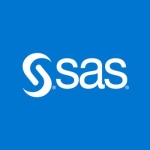What is our primary use case?
We use it to try to do predictive modeling and data exploration. I have a team of people that are working with the tool right now. We have gone through some SPSS training, so primarily we take the data and figure out what they need to try to predict or what they are trying to figure out, then we use the tool to normalize the data, maybe doing some text analytics. We are trying to get into doing some identity resolution with it, so we are using the professional version (the higher version) with it.
It has performed well. We are a bit limited because we are using it on a desktop, but we are moving it into a server architecture so we can have a little bit more horsepower for it. Also, we are getting licenses to do an SPSS server on the back-end, so as to offload some of the work off the desktop. This will help it perform a lot better. However, so far, it has worked pretty well.
We're doing real-time right now, but we are doing batch once we get the server product up and going. In terms of models, we are getting it off the ground. We have been using it for about six months, and we have been just playing with getting our models up and going, so we actually have the whole pure data and Hortonworks analytics products that we are going to be deploying in the analytics environment, that's where our server product will go, then we will have all of the governance pieces in place to start doing production deployment. So, we are almost there.
We are all completely on-premise. It has been fine on-premise, because we host a whole lot of IBM products. Sometimes it gets a little bit convoluted with the licensing. Right now, we just have the fixed user licenses that we deployed. We are trying to get some floating licenses out there to expand the use of it to a bunch of other people.
How has it helped my organization?
It has provided us a lot of small wins that we could bring to our leadership and it has given them confidence with what we were doing in regards to analytics. We have used this to help us pursue bigger, better products, such as IBM PureData. It was a stepping stone, a launching off point, for much bigger products with IBM.
Our go live process has change a little bit compared to a previously programmatic process. We are still getting it built out right now so we are not quite where it is completely mature.
What is most valuable?
All the statistical models that you are able to access.
We have integration where you can write third-party apps. This sort of feature opens it up to being able to do anything you want.
It gives you a GUI interface, which is a lot more user-friendly and easier to use compared to writing R scripts or Python, like some Anaconda type code. It makes it more open and accessible to users that are not as familiar with programming.
We have been able to do some predictive modeling with it. For a business case example: It definitely helped identify issues in the airline industry. The model was able to uncover a few airlines that had some anomalous behavior that we were able to pursue the issues and get them corrected.
What needs improvement?
The platform that you can deploy it on needs improvement because I think it is Windows only. I do not think it can run off a Red Hat, like the server products. I am pretty sure it is Windows and AIX only. Every company is looking at solutions that go towards Red Hat, so if that is not offered, that would be one thing.
What do I think about the stability of the solution?
It seems very stable. SPSS seems like a very mature product. We have not had any issues with it at all.
What do I think about the scalability of the solution?
It is pretty scalable because you can have an SPSS server that we can work to offload, and it seems like we could deploy it to many people if we had the money. It is a little bit costly, but that is with any product like this. Compared to SAS, FICO, or any of their competitors, I think it is comparable.
How are customer service and technical support?
We used technical support for licensing. The experience was okay. It took us a week or two to try to get over their hurdles.
We have direct contact with some IBM partners that work with us directly, so we just go to them when we have any technical issues. This is more on the user end of using the product, and they are very helpful.
Which solution did I use previously and why did I switch?
We were using Excel and beating the heck out of it. We realized with Excel reaching its limits that we need to find out other options. We started to use R, then uncovered this IBM solution by our actual IBM rep, who found that we had licenses for this parked at another location that were not being used. So, we decided to jump right in and we got some training on it.
How was the initial setup?
The initial setup was somewhere in between straightforward and complex. I would not say complex. It seemed pretty straightforward. I think anything that made it more complicated was about our environment, not about the tool itself.
What's my experience with pricing, setup cost, and licensing?
Cost can be a consideration or a factor when looking to try to deploy to more people. Everybody has to be cost conscious, so find a way to receive bigger bundle discounts. We use a lot of IBM products, so I assume we are getting some discounts now.
Which other solutions did I evaluate?
What other advice do I have?
Once you get to the limits of Excel, then you go out and get your pick. Go with a product you know and a vendor you already know
Most important criteria when selecting a vendor: We have familiarity with this vendor already. We are already in IBM shops, so it made it easy to go after those products because we already had a good relationship with them.
Disclosure: I am a real user, and this review is based on my own experience and opinions.






